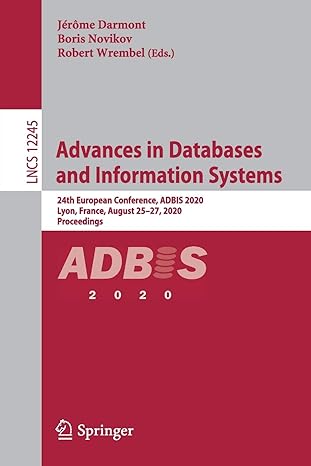Question
A family of deterministic finite automata of degree n over an alphabet , with N = , consists of a set M = {(Ki ,
A family of deterministic finite automata of degree n over an alphabet , with N = , consists of a set M = {(Ki , {1, . . . , n}, i ,si , Fi) : 1 i n} of deterministic finite automata. We fix implicitly a subscript function over M, so that we can refer to the i-th automaton Mi = (Ki , {1, . . . , n}, i ,si , Fi) of M. Such a family performs the following processing:
Given an input w , the automaton M1 starts processing the input as usual, following the transitions in 1, until it reaches a transition of the form 1(q, i) = p, with i {1, . . . , n}. It then gives control to the automaton Mi . The automaton Mi processes the not yet consumed input until it reaches a final state. When such a state is reached, Mi terminates and gives control back to M1, which resumes its operation from state p. M1 accepts the input iff it is in a final state when the end of the input is reached.
More generally, any automaton Mi can call some other automaton Mj , which happens whenever Mi performs a transition of form i(q, j) = p. When such a thing happens, Mi gives control to Mj . When the operation of Mj reaches a final state, Mi takes the control back and resume its operation starting from state p.
Call the whole system a deterministic finite automaton with recursive calls. It is in fact a usual finite automaton, with the added functionality that some edges represent a call to a different automaton instead of the acceptance of one input symbol.
1. Show that any language accepted by a deterministic finite automaton with recursive calls is context free.
2. Are all the languages accepted by deterministic finite automata with recursive calls deterministic context free? Justify your answer.
Step by Step Solution
There are 3 Steps involved in it
Step: 1

Get Instant Access to Expert-Tailored Solutions
See step-by-step solutions with expert insights and AI powered tools for academic success
Step: 2

Step: 3

Ace Your Homework with AI
Get the answers you need in no time with our AI-driven, step-by-step assistance
Get Started


